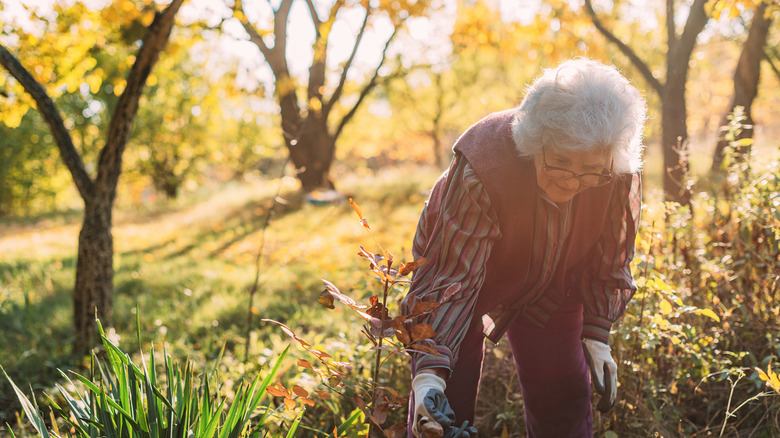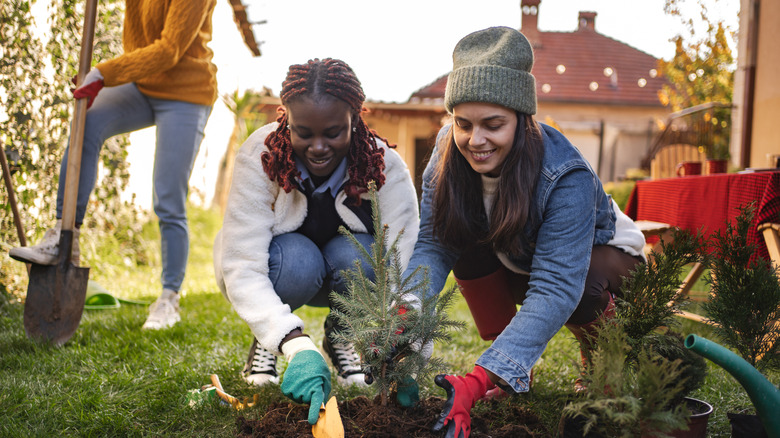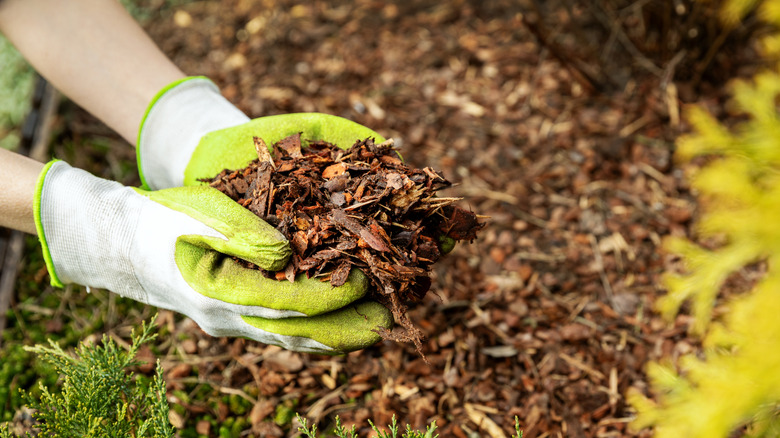How To Know When It's Officially Too Late To Plant Anything In The Fall
Fall serves as a fantastic time to work in your garden. Whether you're hoping to sneak in one last harvest before winter officially takes hold or you're planning ahead for the next season, you can still get a lot accomplished later into fall than you might think. It's actually an excellent time to garden since the lower temperatures can be less stressful on plants. However, it's important to know when it's too late to plant anything in the fall so you don't waste time and energy trying to establish plants that will inevitably die. In short, it's too late to plant when the ground is completely frozen and unworkable. However, nailing down a specific timeline can be tricky.
The deadline for fall planting will vastly depend on where you live and other conditions, such as ground moisture and the type of plants you're working with. If you miscalculate and try establishing new plants too late, you may not get to reap the benefits of fall planting and instead cause your plants irreparable harm. Plus, your crops won't grow strong enough roots and could be more vulnerable to cold damage, drought, and drainage issues. To get an idea of your optimal fall planting window, you'll need to factor in your growing zone, average temperature, humidity levels, and specific plant needs.
How to work out when to stop planting in the fall
It can be difficult to predict when it's officially time to stop planting. As a general rule of thumb, aim to get the last of your fall gardening underway 6 weeks before the ground is predicted to freeze. This gives your plants ample time to establish strong roots before they go dormant. This also leaves enough time to carry out one last harvest for cold-hardy vegetables. However, it's not uncommon for the ground to freeze and unfreeze multiple times throughout the fall, leading to a bit of confusion around when you actually missed the boat.
One way to nail down a time range is to find out the average frost date for your ZIP code and base your fall gardening schedule around that projection. Just keep in mind this might not always be accurate. If you want to sneak in a harvest, stick with fast-growing, cold-tolerant vegetables and check their "days to maturity". If that falls under the amount of time before your frost date, you can plant them. Establish ground covers to plant in the fall, such as phlox, roughly 4 weeks before the first frost. You have a bit more time to establish perennials, bulbs, and shrubs. Some might even be hardy enough to plant 2 weeks after the first frost if the soil is still workable. You should also keep moisture levels in mind when planting in the fall. Some plants might suffer through wet, humid winters even if they're properly established before the cold weather hits.
How to keep your plants thriving until spring
Once you get your plants settled into your garden in the fall, it's time to get your yard winter-ready. Before you let your garden rest for the season, lay down a nice layer of mulch to serve as insulation. Generously apply hay, bark, or pine needles over freshly planted bulbs or around shrubs and trees. You can remove this layer in spring after the threat of freezing temperatures passes. Wrapping some shrubs and trees in burlap over the winter is also helpful in some cases.
While plants you establish properly in the fall should make it through the winter successfully if you did your due diligence, it's still important to continue on with maintenance throughout the winter. Even though your plants are in a dormant state, they still need supplemental water during the coldest months of the year if rain is absent and there's no snow cover. It's important to give them a good drink right after you plant them in the fall and continue to provide water throughout the winter when temperatures rise above 40 degrees Fahrenheit. Be sure to reserve your winter waterings to the middle of the day so your plants have plenty of time to drink up before the temperatures drop overnight.


